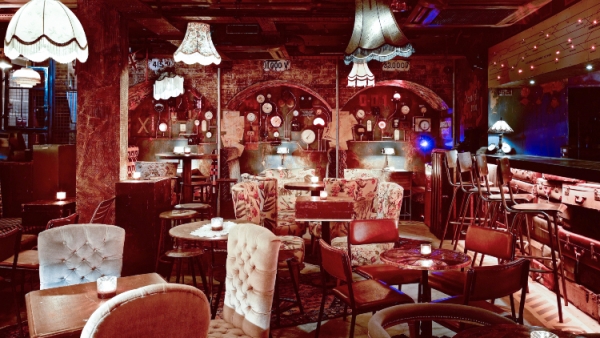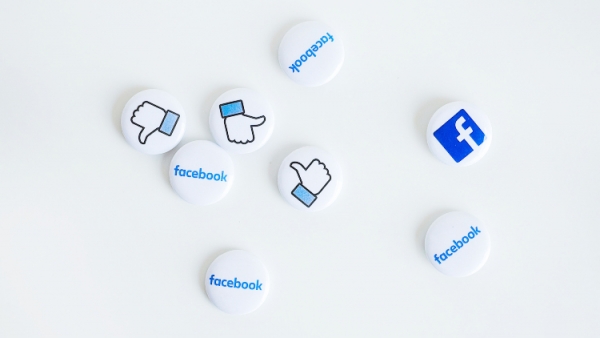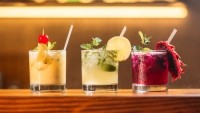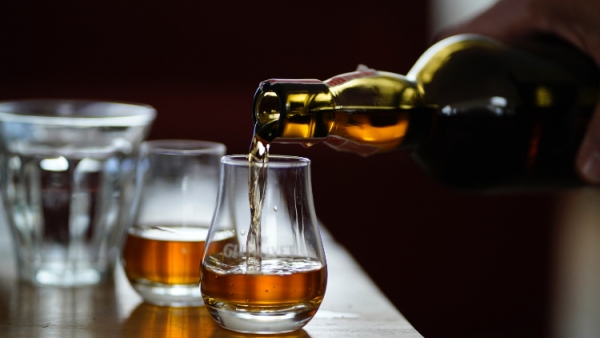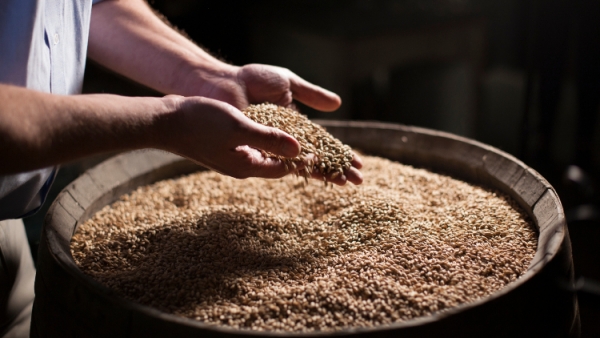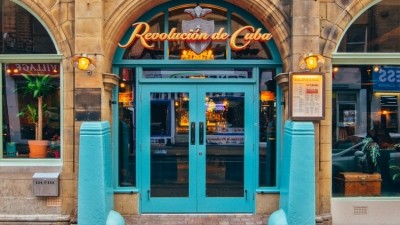A-Z of on-trade marketing
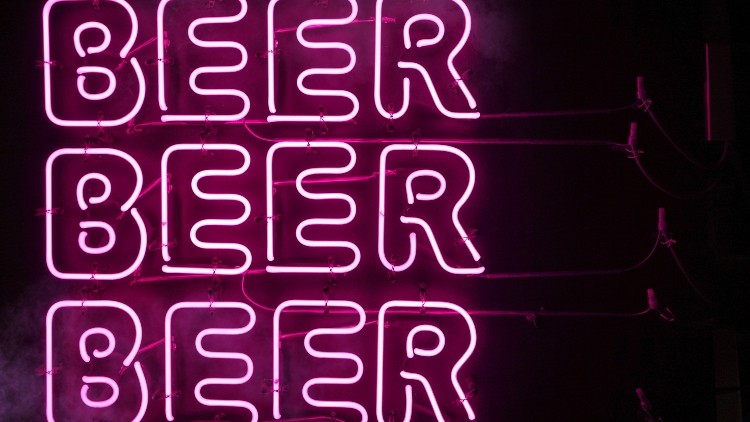
A – Augmented reality
“Augmented reality will be a huge trend this year and, with Facebook’s new AI technology launching, we foresee many companies will jump on this trend and create engaging filters to help encourage more user-generated content,” Emine Mehmet, senior group digital marketing manager at Inception Group, says.
B – Bar ‘stand out’
“In a vibrant and increasingly competitive beer market, creating bar ‘stand-out’ has never been so important,” according to Laura Hicks, beer brand marketing manager at St Austell Brewery. “We know that for people walking through the door of a pub, recognising a strong and unique brand identity is essential to how they choose to spend their hard-earned money.”
C – Cross-channel approach
“It’s all about telling the story through each channel available to you to maximise your reach,” Mehmet adds. “Some of our previous campaigns have gone viral – our ‘World’s Most Desirable Job’ for the launch of Mr Fogg’s Society of Exploration increased users to our websites by over 180%.
“This year, we launched our new venue Cahoots Ticket Hall & Control Room with a campaign called ‘Own this Bar’ where we gave the public the chance to be the venue owner for the opening week of trading leading to over 1,000 bookings in the new venue without us even releasing a photo of it.”
D – Digital detox
According to a 2018 report by Ofcom, the average Brit checks their phone every 12 minutes and spends more than a day a week online – twice as long as 10 years ago. As such its becoming increasingly common for people to put themselves on a digital diet and reduce screen time.
E – Experience
According to Thomas Elliott-Frey, senior marketing manager at Urban Pubs & Bars, building customer experience will play a huge role in nailing marketing strategy in the year ahead.
“When you think about what people want, they’re spending more on experience-led outings and our venues such as the Bat & Ball in Stratford or Juno Rooms in the City, are all delivering on this by creating spaces that are more than just a place to have a drink. Whether it’s that neon or floral feature to activities in-venue, this plays a lot more in creating that memorable experience for customers.”
F – Facebook fighting back
“We’ll see a resurgence in Facebook and its importance in communicating with customers,” Elliott-Frey adds.
“The boom in multiple platforms, most notably Instagram, led many to be distracted and put a lot of focus into those but the ease of targeting the demographic you’re after and their relevant interests is invaluable for driving footfall into venues.”
G – Gateway drinks
“New product development will continue to be important to address seasonal ranging,” Adrian Lugg, head of marketing at Fourpure Brewing Co says. “This, however, will be eclipsed by growth in the gateway craft market, meaning drinkers from outside beer and more traditional lager drinks will discover craft lagers and ales. It will be important to talk to these new consumers in channels and language that they can relate to. This year will be all about value and benefit for the drinker, quality over quantity and, of course, we’ll continue to see a focus on no and low-alcohol products.”
H – Healthy branding
“Drinks that are perceived as healthier are continuing to grow in the alcohol category – such as low-ABV beer, kombucha and hard seltzer,” according to Sophie Cowles, strategy director at Cornwall-based food and drink brand design agency Kingdom & Sparrow. “We predict you’ll see far more of these drinks, particularly on draft. These will be more clean, bright, contemporary brands that break out of the usual beer branding traditions and will sit alongside an evolving craft beer brands in the market. This continual innovation is having a big impact on the branding people expect to see in pubs and on shelves and means heritage brands will have to work harder.”
I – Insight-driven campaigns
“Data is definitely the most important way to make informed and strategic marketing decisions,” Inception Group’s Mehmet explains.
“Long gone are the days where we have to guess what our customers might like. With the data advancements, we have access to how we can analyse our customers’ purchasing behaviours, have access to what they are interested in and create very targeted campaigns with strong return on investment.”
J – Joining forces
“The most beneficial results have come from partnerships with brands we stock in-venue and also competitors,” Elliot-Frey of Urban Pubs & Bars explains.
“Looking back at 2019, we saw great reach with collaboration with drinks suppliers, whether it was our Super Bowl Tailgate Party with Jack Daniel’s – which sold out – to a BBQ, Bourbon and Blues night at the Lord Wargrave pub with Maker’s Mark. They give our venues additional outreach on their platforms and support to promote and gives them an ‘seal of approval’ from a reputable brand.
“When it comes to competitors, this is actually mutually beneficial for both parties at the end of the day. The Croqueta Challenge for Salt Yard Group was originally a one-night a_ air but, in 2019, I tasked each of the four restaurants to host a heat and get local, otherwise competitor, restaurants to enter a croqueta to be judged by the public to go into the final. We had 16 restaurants, including Zelman Meats, Rovi and Lahpet join and promote on their channels and ended up with a final event that sold out in 30 minutes from going on sale.”
K – Knowledge is power
“Relevance is a key battleground for the on-trade, as evidenced by the growing numbers of 18 to 25-year-olds – the key long-term growth demographic for pubs – who are drinking less alcohol,” Robert Rawlinson, CEO of Screach says.
“This doesn’t diminish their potential as pub customers. But it does mean they may need more relevant and sophisticated marketing to draw their attention to the fact that pubs are about more than just drinking alcohol. Whether that is watching sport together or just eating the food they like, pubs that understand what their customers want and then target them with tailored, personalised marketing are the most likely to thrive. Just as in any other retail business, knowledge is power – and smart technology that provides customer insight, tracks customer behaviour and delivers an engaging, entertaining experience will become an increasingly effective way for pubs to attract more people, keep them longer and encourage them to spend more.”
L – Levels of expectation
“When it comes to expectation, this is really down to perceived value and applicable to all sorts of occasion,” Elliot-Frey says.
“Whether it’s key sporting fixtures to a simple drinks menu, elevating something above and beyond a customer’s expectation and something unable to replicate at home justifies expenditure.”
M – Mutual interests
“The customer experience is now at the heart of a successful pub,” Rawlinson adds. “The days of simply opening the doors and expecting customers to flood in are gone, and there is a lot of competition out there vying for customer spend. One area where pubs offer a strong social experience based around shared interests is live sport, be it football, rugby or NFL. Live sport in a pub offers a powerful shared experience that fans can’t get watching at home.”
N – Now
Customer complaints are no longer unravelling over the phone or in person – these often-tense conversations have migrated into the social media sphere via Twitter or TripAdvisor. This, and the popularity of chatbots, demonstrate that consumers now expect instant communication with brands.
O – Over-the-top media services
While everyone is used to streaming whatever they want, whenever they want, at home via the likes of Netflix and Amazon Prime according to Rawlinson, he suggests that the “streaming revolution” shouldn’t just be a threat to pubs, it can also be an ally.
“The rapid growth of streaming, which is now possible for pubs through Screach, finally offers pubs the chance to compete with the sofa. Consumer subscription ‘fatigue’ is definitely an opportunity for pubs, as the content market continues to fragment and people need more subscriptions to watch everything they want. Now pubs can stream live sport too, they can offer customers something more – not only saving on personal subscriptions but also the enhanced experience of watching their favourite sport with their friends.”
P – Provenance
“While volume is down, value is up,” according to St Austell’s Hicks. “People are drinking less but spending more and looking for a premium experience, when they do choose to drink.
“Premium is defined by a genuine point of authenticity. You can’t start with an idea and label it premium, it must start from the very beginning. The story behind products has also contributed to the premiumisation; passion, heritage and quality ingredients also help shape the perception of what premium is and how it can be defined.
“There’s also a very strong link between premium and provenance. Our ingredients, and the British – and Cornish – sourcing story, forms a big part of how we talk about our beers. We work with Cornish barley growers and make this a strong part of the sourcing story to help aid the premium positioning for consumers.”
Q – Quality of serve
“While physical ‘point of sale’ is an important way of engaging drinkers, so is customer experience,” Hicks adds. “Staff training and educating them about a beer’s story or provenance credentials, alongside serving drinks in the right glassware, is as essential as the quality product. People are prepared to pay more for premium when they truly believe what they are buying into, therefore, bar staff truly engaging with a brand is highly effective. Serving the beer in the correct way, with the perfect pour and in the correct glassware, will also help build further brand awareness and enhance the overall drinking experience for pubgoers.”
R – Repurposing content
“Be smart and economical with your content creation,” according to Mehmet. “Creating new content is key to keep followers engaged but can be very expensive, especially as we increasingly use more video content. This year, we have tried to capture and repurpose as much content as we can so that it still appears ‘new’ to our audience, without having to spend any more money. We’ll try to repurpose one video shoot to create at least seven different pieces of ‘new’ content.”
S – Selflessness and sustainability
“Sustainability, mindfulness and giving back will all be things consumers are going to want to see more of from the brands they identify with,” according to Elliot-Frey. “We’ve gone straight in with a ‘wellness’ focus across our venues for the new year – but not just cauliflower steaks. Our campaign focuses on bringing a bit more positivity into January by raising money for charity with indulgent plant-based dishes that give back (£1 from each dish goes to mental health hospitality charity Healthy Hospo and also Run Talk Run) alongside a no-and-low drinks menu that promotes a new range of drinks for those that either are choosing to not drink or just a bit more wary of their alcohol intake. Our gin campaign coming up will have links to sustainability and in general, Urban Pubs & Bars will continue to raise funds for charity, so anything we can do within our marketing to help is definitely something I believe will strike a chord with our customers.”
T – Transparency
Elliot-Frey cites relying too heavily on influencers as being the biggest marketing lesson of 2019. “Yes they play a part in driving brand awareness and the overall marketing landscape but very tricky to measure return on investment,” he explains. “When pulling together a 360° approach to your marketing just don’t put too much weight on them. All industries have been guilty of relying on influencers and thus created a demand for them to promote products but since a couple have been caught out with overly staged photographs, people are smartening up on whether to listen to them or not. Some 64% of UK consumers agree it is extremely important to seek trust and transparency in others, information and from brands, a 12% increase from 2017 (Kantar Global Monitor, 2019).”
U – User-generated content
With content creation increasingly expensive, and a clamour more authentic, less staged influencer content on social media, brands are increasingly using photos and videos generated by the public to create more genuine online engagement.
V – Video content
“Video content is still increasing in popularity, and we find video is the best tool to showcase our experiential venues with our engagement rates being really high on this particular form of content,” according to Mehmet. “Live videos are definitely the next big trend as consumers tend to spend more time watching lives than pre-recorded, and this is definitely something we are looking to do more of in 2020. All of our websites now have video content on our landing pages, so that they are experiential and engaging right from the first click on our sites.
“The video sharing platform TikTok is the next big social media platform but hasn’t really reached the pub or bar sector yet. The app is overwhelming favoured by young people, the majority being Generation Z, with a strong female bias (around 66%), but if the average age continues to creep up we can imagine it becoming a key marketing platform for us in the near future.”
“Growth of image-based platforms such as Pinterest and Instagram show that people prefer and interact more with visual content to plain text,” Punch’s marketing and strategy director Russell Danks adds. “Some 85% of people are more likely to buy a product or service after watching a video about it.”
W – Word of mouth
A study of 2,000 British adults by AI and data agency Artefact UK found that 60% of smart-speaker owners have used them to make a purchase in the past year.
“People search by voice very differently to how they search by text,” according to Mehmet, “so how this will affect search engine optimisation for example, will be very interesting to see. Of course, it will have its challenges but this could change consumer behaviour forever.”
X – X marks the spot
“The ability for small businesses to reach a broad audience in a highly targeted manner at low cost through social and direct marketing is going to be hard to overlook,” according to Adrian Lugg of Fourpure. “Last year was the first major foray for a number of larger craft breweries competing for attention in more traditional media. We saw major campaigns backed by substantial spend across print, out of home and digital. Despite deeper pockets for a small number of breweries, digital, PR and direct will continue to be the mainstay for the majority of UK’s 2,500-plus brewers.”
Y – You
Russell Danks of Punch argues that customers are seeking new, more personal, ways to interact and engage with brands. “Personalised messages and interactions forge a real connection. This isn’t just a personalised email; this is using data collection to form individual profiles of your customers to drive targeted marketing.”
Z – Zeitgeist
The past 12 months have seen activists, specifically in the climate movement, shaping brands.

